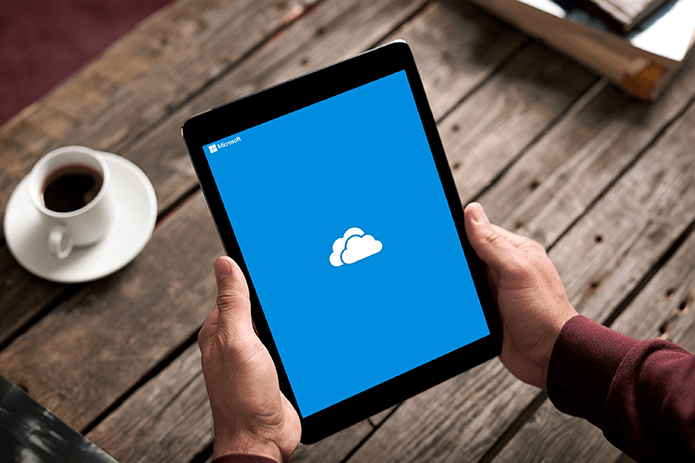Lately, OneNote got beefed up with new features and is especially preferred by those who are rooted in the Microsoft ecosystem and use Office 365. Visit OneNote Notion claims to bring the best of both the worlds by offering a new block-based layout which is usable as a note-taking app, Kanban tool, and to-do list. Visit Notion Let’s see if Notion is all that it claims to be and whether it can replace OneNote for good.
1. UI and Layout
Both OneNote and Notion come with a neat layout where notes and other elements are easily accessible. OneNote takes a notebook approach where you can create notes that rest in sections which are further stored inside notebooks. An age-old way to take notes, digitized for the modern world. Notion takes a different approach. Instead of notebooks and sections, there are pages where you can create blocks (more on that later). You can drill down into pages from the sidebar, similar to how most note-taking apps work. OneNote for mobile lacks a sidebar. Typically, you have to choose a notebook and drill down from sections to notes. That makes it cumbersome and time-consuming. Notion has a handy sidebar that makes it easier to hop between pages and notes without too many taps to go back and forth. On the flip side, search and other options are placed at the top instead of bottom making them hard to reach.
2. Taking Notes
OneNote will let you create notes in a variety of formats like text, audio, and image notes. These notes can be tagged and filed in sections and notebooks and are searchable on all devices. There are browser extensions that you can use to clip web pages or part thereof. Notion takes a new approach of letting you create pages inside which you can then create blocks. These blocks can be text, audio, table, gallery, Kanban style board, video, code, wikis and more. That opens up so many possibilities and offers many ways to customize your workflow. Also, there is no limit to how deep you can go with pages like a page within a page and so on. Each block in Notion is freely movable inside the page and outside it. Then there are templates for taking notes like knowledge base, to-do lists, projects, and even database. Useful for newbies who can find so many options and flexibility overwhelming and confusing. Each block within a page is linkable to other blocks or pages. Instead of blocks, OneNote has paragraphs which are internally linkable to other paragraphs, notes, sections, and notebooks. However, there are no templates (still exists in OneNote 2016 version) and the number of options when it comes to creating different types of notes is limited compared to Notion.
3. Uncommon Features
OneNote comes with a built-in calculator. Just type simple math formulas like 3+3-4 anywhere in the note and OneNote will answer it. With OneNote, you can only go two levels deep which means Notebooks > Sections > Notes. OneNote supports handwriting recognition and can convert them into notes which can be both fun and handy, especially if you are the creative type. OneNote supports many fonts while Notion supports icons. With Notion, there is no limit to how deep you can go when creating pages within pages. That way of the hierarchy is unheard of in any other note-taking app.
4. Privacy and Security
You can password-protect sections in OneNote and all the notes contained in that section will be encrypted. Microsoft notes that if you lose the password, not even Microsoft Support can access these notes or help you recover it. Microsoft uses AES-128 bit encryption to protect OneNote. Some xtime ago, when I was testing Notion for personal use and was worried about how Notion handles security, I fired up a tweet and got a response from Notion Team. They are encrypted at Rest and in Transit but not end-to-end and do not offer 2FA or the ability to encrypt pages or blocks at the moment. That is not good in my opinion. May be these options might show up in the future.
5. Integrations, Platforms, and Pricing
Microsoft OneNote for Windows 10 is completely free and comes pre-installed with Windows 10. You can also use the same version with Office 365 and Office 2019 version. OneNote integrates with all Office apps like Word, Excel, Skype, and so on, but 3rd party apps are left completely. Note that the Office 365 subscriptions have Researcher feature in OneNote which the free version lacks. The Researcher will let you search Bing for quotes, references, and other materials right inside OneNote. Both OneNote and Notion are available for Windows, Mac, Android, and iOS and have a Chrome extension. Notion leaves Firefox out for some reason, but OneNote does not. Notion is free for up to 1000 blocks which should be good enough for moderate use. After that, you will be charged $4/month. Notion integrates with many apps like Slack, Unsplash, and so on but does not have a dedicated page with app list for some reason.
I Have a Notion
Notion is positioning itself as a cross between note-taking app (OneNote), to-do lists (Todoist), Kanban (Trello), calendar (Google Calendar) and database management (Airtable) apps. It’s a nice concept. Also, I am tired of hopping between multiple apps to track my work and personal life. Notion is powerful and suited for power users. That said, security is still not there yet, but I am optimistic. I also believe that anything that you want to stay private and hidden should be noted down on a piece of paper. Privacy Policies can change anytime. OneNote is still amazing and offers most features you would need from a note-taking app. As noted previously, OneNote is a must for those who are deep in the Microsoft ecosystem. Next up: Have you heard of Dropbox Paper? Here is an in-depth comparison between Paper and Notion. The above article may contain affiliate links which help support Guiding Tech. However, it does not affect our editorial integrity. The content remains unbiased and authentic.























